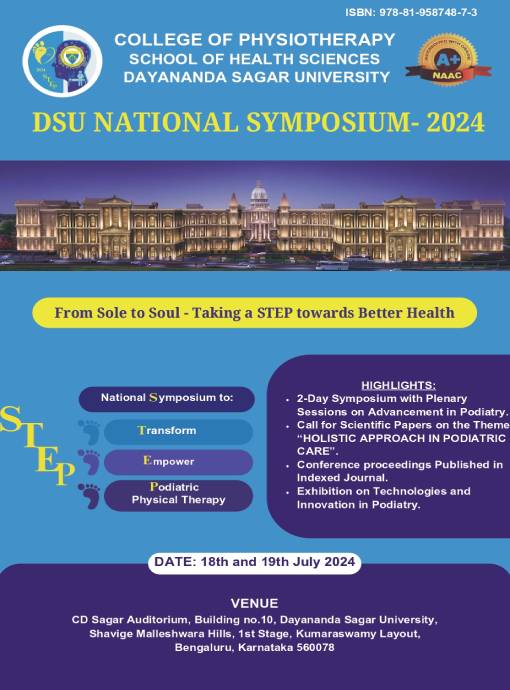Unveiling Hidden Pain: A Case of Neglected Ankle Complex Regional Pain Syndrome and the Importance of Early Diagnosis and Intervention
DOI:
https://doi.org/10.18311/DSUPHY/9788195874873/2024/031Keywords:
Complex Regional Pain Syndrome; CRPS; Pediatric; Physical TherapyAbstract
Introduction: Complex Regional Pain Syndrome (CRPS) is a chronic pain condition that can lead to significant disability if not identified and treated early.
Objective: This case report aims to highlight the crucial role of early diagnosis and evidence- based intervention in preventing long-term disability in pediatric CRPS.
Methodology: A 12-year-old female was referred to our physiotherapy outpatient department for a splint prescription for right great toe flexion contracture by a tertiary-care center. She had a history of surgically treated distal both bone fracture of the right lower limb, sustained five months prior. The patient reported the symptoms of allodynia, oedema and exhibited temperature asymmetry, reduced ankle joint mobility and difficulty weight-bearing which restricted her Activities of Daily Living (ADLs), play and schooling which were not addressed priorly elsewhere. Using the Budapest Criteria, a clinical diagnosis of CRPS was made, with a CRPS Severity Score (CSS) of 15/17. Initial Physical Yherapy (PT) included pain management using Transcutaneous Electrical Nerve Stimulation, sensory re-education, mirror therapy, followed by strength, proprioceptive and functional mobility training.
Result: After six PT sessions, patient showed reduction in pain and oedema. The CSS at six weeks was 4/17. Over eight weeks, she improved in ADLs, returned to school and eventually discontinued therapy.
Conclusion: This case emphasizes the importance of healthcare professionals being vigilant in identifying the signs of CRPS to enable early diagnosis and intervention. This is particularly crucial in pediatric patients to prevent chronic pain which can interfere with their overall development, academic, athletic and social participation.
 Srushti S. K.
Srushti S. K.
